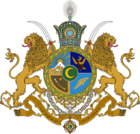Nuristan
| Sultanate of Nuristan سلطان نشین نورستان | |||
| Riyasat of Çakaristan | |||
| |||
| Subdivision | Riyasat | ||
| Capital | Prasun | ||
| Largest cities | Prasun | ||
| Area | 142,416 km2 | ||
| Population | 4,737,271 census of 1740 | ||
| Sultan | Ayub Hotak | ||
| Legislature | Majles-e Nur | ||
| Languages | Babkhi, Jingdaoese, Qyzylqay | ||
| Time Zone | CMT-1 | ||
| Driving side | left | ||
Nuristan, officially the Sultanate of Nuristan (Babhki: سلطان نشین نورستان), is a riyasat (princely state) of Çakaristan, located on the coast of the Northern Sea in the northwest. It borders Hurmu on the east side and the Kyazilkai Khaganate on the south side.
History
In 1574 AN Nuristan became the northernmost colony of the Kingdom of Babkha. But lapsed into The Green after the 1598 Babkhan Holocaust. The western part of Nuristan was incorporated by Jingdao in 1662 AN and subdivided into Jingqyzyl province. During the Post-Chidao Troubles, Nuristan came under the control of the Seishi Clique. As part of the Çakari operation, the Bay of Prasun was the landing site for the Çakari troops. This is called the "Landing of Lingtsu", despite Lingtsu being a district in Jingqyzyl.
When the Great Apollonian Empire was founded in 1698 AN, the eastern part of the original Nuristan was added and became a state. The western part was part of the Jingdaoese Community and the eastern part of the Çakari Community. After the fall of the Great Apollonian Empire in 1704 AN, the state became part of Qyzyl People's Republic. But in 1711 AN, Qyzylqaystan was ceded to Çakaristan as part of the Treaty of Raynor's Keep. It was classified as a princely state and a sultan was appointed.
Flag
The flag of Nuristan reflects the history of the various ruling empires. The sun of Babkha, the golden rays of Jingdao, the dark red and green areas refer to the two periods of Çakari involvement.
Map

| ||||||||||||||||||||||||||||||||||||||||||||||||||||||||||||||||||


